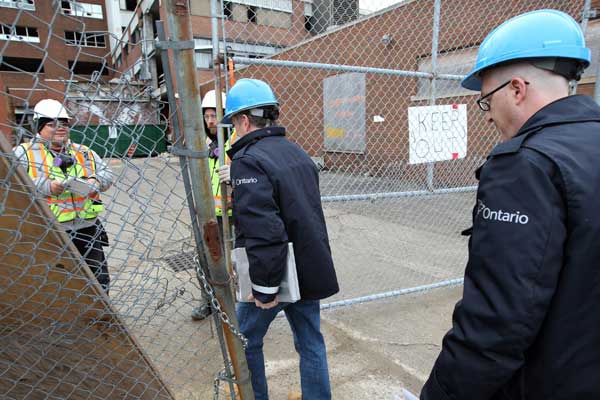New Ontario Law Affects Crane Users as of January 1st, 2017

The Ministry of Labour’s latest amendment to the Construction Regulations provides a stronger definition as to which methods, and what qualifications, are required to perform non-destructive testing (NDT) on lift devices.
The new law, effective January 1st 2017, clearly defines non-destructive testing (NDT) to include only the following recognized methods:
- Magnetic Particle Testing
- Liquid Penetrant Testing
- Ultrasonic Testing
- Eddy Current Testing
- Radiographic Testing
How Does This Change Anything?
The previous edition of the regulation effectively allowed unqualified personnel to perform NDT testing.
As a result, that’s exactly how many crane inspection companies did their business. What’s more, without a definition for NDT testing, many of these companies worked on the premise that visual inspection was “non-destructive” because it didn’t cause any damage.
This is no longer the case. The changes in the regulation should elevate the quality of structural inspection in the lift industry.
Does The New Law Affect You?
This legislation impacts anyone who:
- Uses a crane to lift personnel in a manbasket, or;
- Owns, erects, or operates a tower crane on a construction site;
- Uses suspended work platforms / boatswain chairs
You may be wondering, how this affects your current inspection practices?
Well, if your company already uses CGSB certified inspectors and they perform non-destructive testing instead of just visual inspection, then you’re already in compliance with the new law.
However, if your crane inspection company isn’t compliant with the new definitions, you are risking a sudden work stoppage at the hands of the Ministry of Labour.
Check Your Inspector’s Credentials
So how do you ensure that your crane inspector is properly qualified according to the new regulation?
Just as a hoisting engineer carries a qualification card issued by the government, CGSB certified NDT personnel also carry a qualification card issued by Natural Resources Canada.
Before allowing an inspector to begin working on your crane, ask to see their CGSB qualifications. If they cannot provide their card, the inspection they provide won’t meet the requirements of the Construction Regulations.
If there is any doubt about the qualifications of your inspector, they can be verified online using the directory provided by Natural Resources Canada. The link for the most up to date list of certified NDT technicians can be found at this website: http://www.nrcan.gc.ca/mining-materials/non-destructive-testing/8600
Summary:
If you’re operating tower cranes or using any crane to lift personnel in a manbasket, you need to be performing non-destructive testing on that equipment periodically. The new legislation mandates NDT testing be performed by CGSB certified personnel using specific forms of testing. Visual inspection does not qualify as an NDT method.
Domson Engineering and Inspection has always been proudly in full compliance with the new regulation. All our inspectors are CGSB certified by Natural Resources Canada and we have always used magnetic particle inspection and ultrasonic testing as staples of our structural inspections.
If you have any questions about our services or how the new law may affect you, feel free to contact us.
Requirements for Specific Construction Equipment
The new regulation makes it clear that the following equipment is required to have nondestructive testing on a regular basis:
Cranes carrying personnel
Before the crane is first used to lift persons, and at least once every 12 months after the first test, a professional engineer shall ensure that the crane be subjected to nondestructive testing to ensure the structural integrity of the crane.
Tower Cranes
Before a tower crane is erected at a project, a professional engineer shall ensure that the structural elements and components of the crane be subjected to nondestructive testing to ensure the structural integrity of the crane.
Suspended Work Platforms and Boatswain’s Chairs
At least annually, a representative sample of each type of structural component shall be randomly selected and subjected to nondestructive testing.




